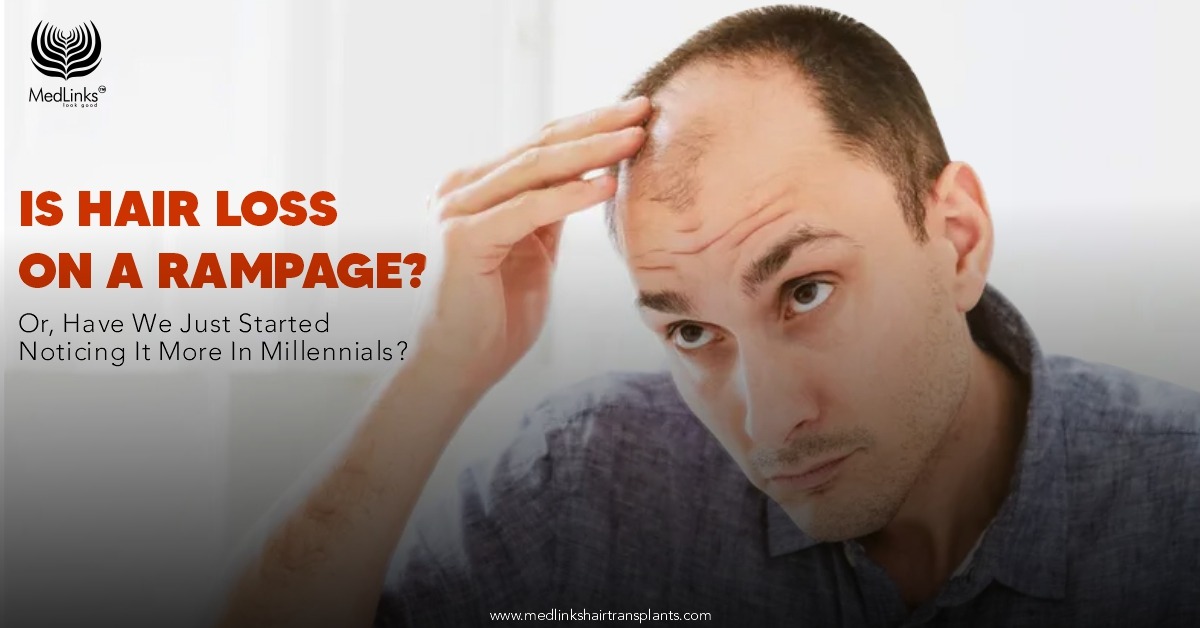
Quick flashback, hair loss and baldness used to be quite a thing for those of age. But suddenly, what has changed?
Now it has, particularly among millennials, become a topic of increasing concern.
Whether it is just simply a heightened awareness or in fact increase in cases and reports, the surge has hit the spotlight.
What The Expert Has To Say? Is Social Media One Of The Factors?
Celebrity-Trusted hair transplant surgeon, Dr Gaurang Krishna, reveals apparent evidences of hair loss in young age.
One of the most significant shifts contributing to the perception of rampant hair loss is the rise of social media and internet platforms. The truth is – we have evolved so much at this age of information technology. Everyone knows almost everyone. What once used to be a personal issue has now become a phenomenon which sparked public debates.
Influencers and individuals alike have started sharing their personal struggles with hair loss on platforms such as Instagram, YouTube, and TikTok. This open discussion has demystified hair loss, making it a more common topic of conversation and concern.
In an exclusive interview with the TV18 Network, leading hair transplant surgeon in Delhi, Dr Gaurang Krishna says: “it’s positive. The number grows than how it used to be”.
Moreover, millennials are often more health-conscious and proactive about their well-being compared to previous generations. This heightened focus on health includes paying closer attention to changes in their bodies, such as hair thinning or shedding, which might have gone unnoticed or unmentioned in the past.
Why Young Generations Have Started Losing Hair Sooner?
Stress is one of the of primary reasons. Dr. Gaurang Krishna, MD and Co-Founder, MedLinks, in his fifteen years of hair loss treatments said an increasing number of youth as early as 18 years of age are seeking medical treatments to combat hair loss. Hair thinning in female and receding hairline in teenage boys have become so common.
Here’s a breakdown of:
Eight Reasons Why Young Generations Are Losing Hair More Aggressively
Several habits and lifestyle choices common to many young individuals could be contributing to the perception and reality of increased hair loss. To name a few:
1. Stress:
Millennials are navigating an era where they have to deal a lot of issues way ahead of their times like economic instability, societal pressures, job market fluctuations., etc. Growth and productivity weighs volume to the youths’ minds leading to a stressful living.
And if there is stress there is hair loss, a condition called telogen effluvium, where stress pushes hair follicles into a resting phase, leading to increased shedding.
2. Diet and Nutrition:
The modern diet, let’s face it, has zero to none essential nutrients. It’s the age of processed foods. Also lets be real, healthy foods equal pricy in practical sense.
With inadequate key nutrients like vitamins A, C, D, E, zinc, iron, and proteins in our diet, there is no room for healthy hair growth but more hair loss.
3. Sleep Patterns:
Scrolling reels and social media marketing marks the peak of the age. Irregular sleep schedules and inadequate sleep are not uncommon among millennials juggling multiple responsibilities.
But the truth is we are neglecting the most crucial bodily cell regeneration requirements as we sacrifice proper sleep. This includes our hair health.
4. Pollution:
Increased exposure to pollutants and environmental toxins can damage hair follicles and scalp health, contributing to hair thinning and loss.
5. Chemical Exposure:
Young generations are more familiar with hair styling products, heat treatments, and chemical dyes, which obviously come with a price – hair damage over time.
6. Genetic Factors:
Although our unhealthy lifestyle and environmental factors are evident, genetic predisposition still plays major role in hair loss:
Male (/ female) pattern baldness or androgenetic alopecia affects both men and women. It can begin as early as the late teens or early twenties, a prime age for millennials, making it seem like the prevalence is higher in this group.
7. Improved Diagnostics:
Modern diagnostic tools allow dermatologists and trichologists to detect hair loss earlier and more accurately. This leads to more frequent diagnosis and reporting, making it appear as though more people are experiencing hair loss.
8. Treatment Options:
The availability of various treatments, both medical (like minoxidil and finasteride) and cosmetic (like hair transplants and PRP therapy), encourages individuals to seek help for hair loss. This proactive approach brings more cases to light.
The growing dialogue around hair health is a positive development, leading to better awareness, early intervention, and more effective management of hair loss.
Understanding these factors can help us approach the issue of hair loss with a comprehensive perspective, addressing not only the symptoms but also the underlying causes.
As we continue to explore this topic, further research and open conversations will be crucial in developing effective strategies to manage and mitigate hair loss in millennials and beyond.






























